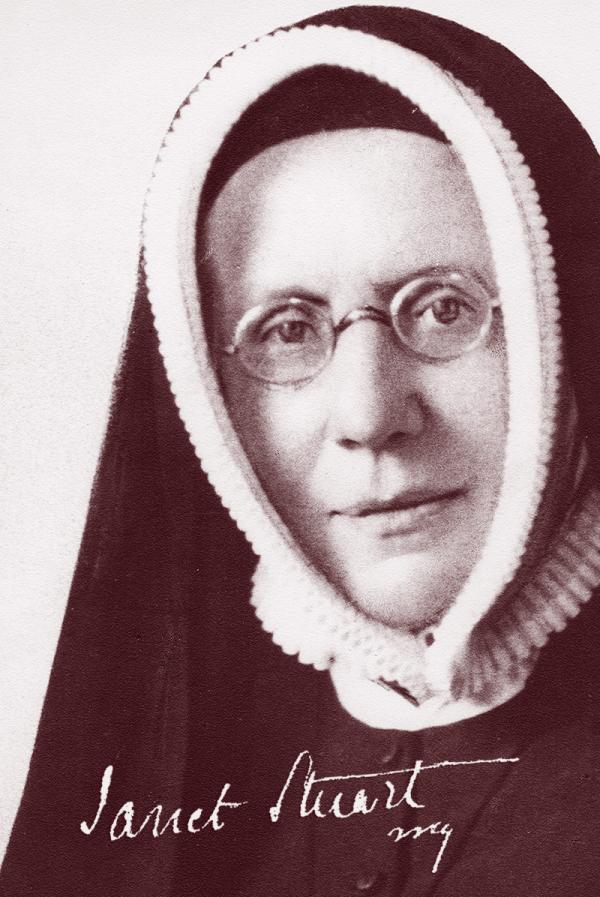An intellectually gifted child, Janet was the youngest of the thirteen children in the Anglican Rectory at Cottesmore, in Rutland, England. Typically of her social class and time, she was educated at home and was fortunate in her governesses who included very capable, well trained German and Swiss teachers with whom she learned fluent German and French, and studied philosophy, maths and literature. With the help of one, she pursued a theological interest that began when she was 13, sparked by a conversation with a brother who was reading Aristotle and who declared to her that all creatures had a ‘last end’ or ultimate purpose and goal in their lives, and asked her what hers was. Janet did not know, but set herself to find out.
This quest took her through teenage years of religious scepticism and an interest in continental philosophy until she finally decided to become a Catholic, at the age of 21. Her decision was courageous at a time when Catholics were still viewed with suspicion in England – even more so because as a Church of England minister her father could not countenance her remaining at home, where her religious affiliation might cause scandal and division among the parishioners. Janet was forced to leave home, and for three years lived with friends and relatives in London or in Ireland, whilst continuing her search for her true path in life. At last, she found it by entering the Society of the Sacred Heart at Roehampton in 1882.
Named Mistress of Novices soon after her profession, she became Superior Vicar in 1894. In 1911, she was elected Superior General of the Society of the Sacred Heart, and left Roehampton to take up her residence in the Mother House, then in Brussels. The last three years of her life were spent in visiting the convents of the Society in all parts of the world. The close of her long journeys coincided with the outbreak of war in 1914. Escaping from Brussels, from where she could no longer keep in touch with her convents, she returned to Roehampton.
She was already ill when she arrived in England, and did not recover. She died on October 21st 1914, aged 57, and is buried in the Sacred Heart chapel at Roehampton, one of the few parts of the original building which survived the bombing in WWII.
Used with permission of the England/Wales Province. Originally published at http://www.societysacredheart.org.uk/janet-stuart-brief-biography.htm
-
Link to a gallery of artwork inspired by Janet Erskine Stuart, from the Stuart Center in Washington, DC: https://stuartcenter.org/centenary/jes-art
-
Links to free books:
Education of Catholic Girls: http://www.gutenberg.org/ebooks/15892
Maud Monahan, Life and Letters of Janet Erskine Stuart: http://archive.org/stream/lifelettersofjan00monarich#page/n9/mode/2up
-
"Spirit Seeking" with video: https://www.youtube.com/watch?v=KBbAeEqQeao
-
Playlist of presentations during the JES Centennial (courtesy of http://www.societysacredheart.org.uk)
Input and events to commemorate JES: https://www.youtube.com/playlist?list=PLaZL883LWv7lZIbswK7fHJkwM_vS_lfzJ

